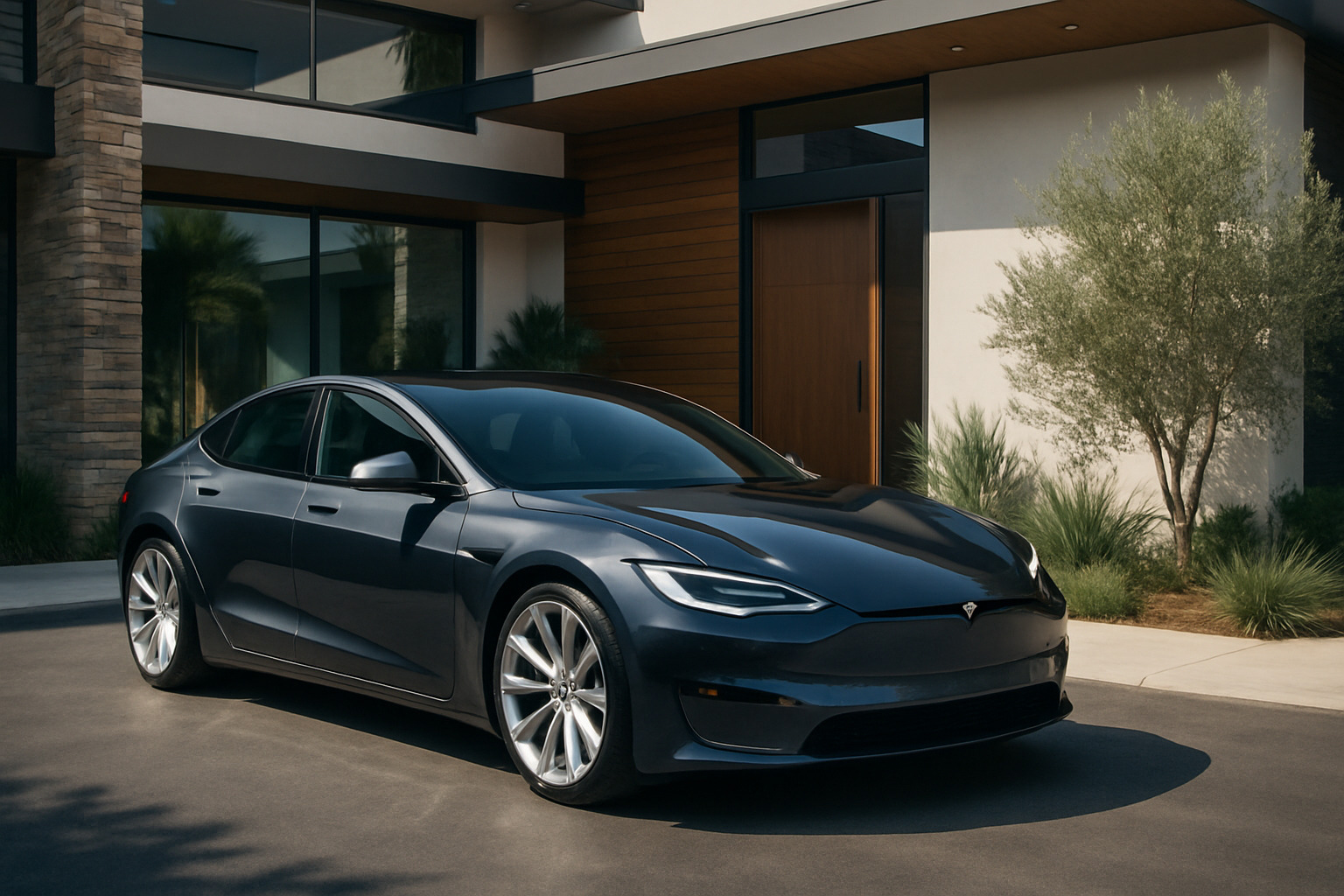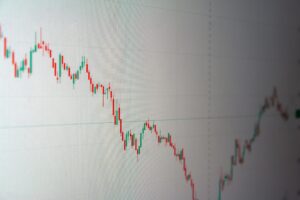Luxury electric vehicle market: 10 Powerful Growth Trends 2025
Why the Luxury Electric Vehicle Market is Experiencing Unprecedented Growth
The luxury electric vehicle market is witnessing explosive growth as wealthy buyers accept high-performance EVs that don’t compromise on status or sustainability. This premium segment combines cutting-edge technology with environmental consciousness, attracting eco-minded elites who want both luxury and green credentials.
Key Market Facts:
– Current Value: $239 billion (2024)
– Projected Value: $643.9 billion by 2030
– Growth Rate: 18% CAGR
– Regional Leader: Asia-Pacific with 61% market share
– Consumer Shift: 44% of luxury ICE owners ready to switch to EVs
– Brand Loyalty: 95% open to switching luxury brands
The change is happening faster than anyone predicted. Just five years ago, EVs made up only 1% of new vehicle sales. Today, that number has jumped to over 7% in markets like the U.S., with luxury segments leading the charge.
High-net-worth individuals are driving this boom. These buyers have the disposable income to afford premium EVs and increasingly view sustainability as a luxury attribute, not just an environmental choice. 62.5% of luxury vehicle consumers now consider a brand’s sustainability commitment before making a purchase.
Government policies are accelerating adoption through tax incentives, charging infrastructure investments, and emissions regulations. Meanwhile, technological breakthroughs in battery density, charging speeds, and autonomous features are making luxury EVs more compelling than ever.
The shift isn’t just about going electric—it’s about redefining what luxury means in the 21st century.

Sizing the Luxury Electric Vehicle Market: Current Numbers & 2030 Outlook
The luxury electric vehicle market tells a remarkable growth story that’s reshaping the automotive industry. We’re looking at a market valued at $239 billion in 2024 that’s set to explode to $643.9 billion by 2030. That’s nearly tripling in size over just six years, with an impressive 18% compound annual growth rate driving this expansion.
What makes these numbers even more striking is where the growth is happening. Asia-Pacific absolutely dominates with a commanding 61% market share, translating to roughly $145 billion of the current market. This isn’t just about wealthy buyers—it’s about entire regions embracing electric luxury as the new standard.
China alone is forecasted to grow at a 16.9% CAGR to reach $98 billion by 2030. The country’s expanding population of ultra-high-net-worth individuals is creating unprecedented demand for premium EVs that combine status with sustainability.
North America isn’t sitting on the sidelines either. The region holds a solid 30.1% revenue share, valued at $63.7 billion in 2023. With average per-capita income levels of $81,630, American luxury buyers have both the means and motivation to go electric. Meanwhile, Europe is pushing forward with ambitious CO₂ reduction targets of 55.2% by 2030, creating regulatory tailwinds for luxury EV adoption.
The vehicle mix reveals some fascinating trends. Premium SUVs are absolutely taking off, with their market share jumping from less than 25% in 2021 to an expected 40% by 2031. Luxury buyers want the commanding presence of an SUV combined with the silent power of electric propulsion.
When we dig into propulsion types, the data shows some surprises. Fuel Cell Electric Vehicles (FCEVs) held a dominant 65.3% share in 2023, highlighting hydrogen’s emerging role in premium applications. Battery Electric Vehicles (BEVs) are projected to reach $409.9 billion by 2030 with a 17.2% CAGR, while Plug-in Hybrid EVs are growing even faster at 18.6% CAGR.
According to the comprehensive Luxury Electric Vehicles Global Strategic Business Report, these growth patterns reflect fundamental shifts in consumer preferences and technological capabilities that are reshaping the entire automotive landscape.
For deeper insights into electric vehicle trends shaping the industry, explore our comprehensive guide on Electric Vehicles.
Luxury electric vehicle market growth trajectory to 2033
Looking beyond 2030, the luxury electric vehicle market shows no signs of slowing down. Projections point to an astronomical $963.8 billion by 2033, maintaining a strong 17.8% CAGR over the next decade. This extended outlook reveals something remarkable—the market’s momentum is actually accelerating, not plateauing.
The numbers tell a story of complete change. BEV penetration in luxury vehicles is set to jump dramatically from just 6% in 2021 to 46% by 2031. That’s not gradual change—that’s a revolution in how wealthy buyers think about performance and prestige.
The ultra-luxury segment, covering vehicles over $300,000, will see BEV penetration reach 35-40% by 2026. These are buyers who could afford any car they want, and they’re choosing electric. It’s a powerful statement about where the industry is headed.
China’s role becomes even more significant in this extended timeline. The country is expected to capture a 30-35% share of global volume by 2031, with the fastest growth rate of about 13% CAGR. This reflects the country’s expanding ultra-high-net-worth population, which is projected to grow by an incredible 250% from 2021 to 2026.
The compounding demand drivers are clear. The luxury and ultra-luxury BEV market is expected to grow at about 35% CAGR over the next 10 years—almost 10 times faster than non-BEV luxury vehicles. This massive differential shows how completely electric powertrains are reshaping what premium means.
Luxury electric vehicle market segments by propulsion
The propulsion landscape in the luxury electric vehicle market is more diverse and dynamic than many people realize. While BEVs grab most headlines, the actual market breakdown reveals some fascinating dynamics across different technologies.
FCEVs currently lead with 65.3% market share in 2023, driven by their appeal to luxury consumers who want fast refueling and long-range capabilities without compromise. Hydrogen infrastructure investment is creating real opportunities for premium applications, with ambitious goals to put one million fuel-cell electric vehicles on the road by 2030.
BEVs dominate when measured by volume, holding over 65% of the overall luxury EV market in many regions. They’re benefiting from rapid advances in battery technology that now enable 300+ mile ranges, effectively eliminating range anxiety for luxury buyers. The integration of AI and IoT technologies is making these vehicles feel more like luxury tech products than traditional cars.
PHEVs are experiencing robust 18.6% CAGR growth, appealing to luxury consumers who want the best of both worlds. These buyers love having electric power for daily commuting but want gasoline backup for spontaneous road trips or longer journeys. It’s the perfect bridge technology for buyers who aren’t quite ready to go fully electric.
Interestingly, the fuel cell luxury EV segment is forecast to grow fastest with a 21.8% CAGR. This reflects increasing investment in hydrogen infrastructure and the technology’s particular appeal for long-distance luxury travel applications where refueling speed matters as much as performance.
The mix is constantly evolving as technology improves and infrastructure expands. What’s clear is that luxury buyers aren’t settling for just one solution—they want options that match their diverse lifestyles and preferences.
Key Growth Drivers and Emerging Consumer Trends

Something fascinating is happening in the luxury electric vehicle market—wealthy buyers are completely redefining what luxury means. It’s not just about leather seats and chrome anymore. Today’s affluent consumers want their cars to make a statement about their values, not just their bank accounts.
The eco-conscious elite are driving this change. These high-net-worth individuals have finded that going green doesn’t mean giving up prestige. In fact, it’s quite the opposite. 62.5% of luxury vehicle consumers now consider a brand’s sustainability commitment before making a purchase. That’s a massive shift from just a decade ago when environmental features were barely on luxury buyers’ radar.
Government incentives are sweetening the deal considerably. Tax credits up to $7,500 in the U.S. make these premium vehicles more accessible, while the EU’s €1 billion investment in charging infrastructure is removing practical barriers. Zero-emission mandates are creating urgency, giving buyers confidence that electric is the future, not just a trend.
The way people shop for luxury cars is changing too. Over 40% of luxury buyers prefer online channels for vehicle purchases, leading to exciting new direct-to-consumer sales models. Brands are responding with exclusive virtual showrooms and VIP home delivery services that feel more like concierge experiences than traditional car buying.
But here’s what’s really interesting—over 30% of luxury customers want an experience ecosystem that goes far beyond the vehicle itself. They’re looking for invitation-only driving events, exclusive owner clubs, and premium services that make them feel part of something special. It’s about community and shared values, not just transportation.
Sustainability branding has evolved from a nice-to-have feature to an absolute necessity. Luxury buyers expect recycled materials, carbon-neutral manufacturing, and transparent sustainability reporting. They want to feel good about their purchase, knowing their luxury choice aligns with their environmental values.
For deeper insights into these evolving preferences, check out our coverage of Luxury Car Trends and Automotive Sustainability Initiatives.
Shifting buyer priorities in the luxury electric vehicle market
The data on what drives luxury EV purchases tells a compelling story about changing consumer values. Innovation leads the pack at 51% of buyer priorities, reflecting how tech-savvy luxury consumers have become. They want their cars to be rolling smartphones with AI-powered everything and over-the-air updates that keep improving their ride.
Sustainability comes in strong at 43%, proving that environmental consciousness isn’t just trendy—it’s fundamental to how affluent buyers make decisions. This isn’t about sacrifice anymore. It’s about finding products that deliver both luxury and align with personal values about protecting the planet.
Here’s the shocker: 95% of luxury buyers are open to switching brands for their next purchase. That’s an earthquake in an industry built on brand loyalty. Traditional prestige badges matter less when buyers prioritize cutting-edge features and environmental responsibility over historical reputation.
Performance remains crucial, with about 50% of luxury buyers citing driving dynamics and design as primary factors. The good news for EVs? Electric motors deliver instant torque that many buyers find more exciting than traditional engines. It’s performance redefined for the electric age.
Perhaps most telling is that 44% of existing luxury ICE owners are ready to switch to pure EVs. That represents massive pent-up demand just waiting for the right combination of products, infrastructure, and confidence in the technology.
Policy tailwinds & financial incentives
Government support is creating unprecedented momentum for the luxury electric vehicle market through smart financial incentives and long-term infrastructure planning. It’s not just about handouts—it’s about creating an ecosystem that makes electric luxury vehicles the obvious choice.
Tax credits are making real financial impact. The U.S. federal tax credit of up to $7,500 can significantly reduce the premium for luxury EVs, while states like California add their own rebates through programs like the Clean Vehicle Rebate Project. Similar programs across Europe and Asia are creating global momentum.
Zero-emission mandates provide the regulatory certainty that both buyers and manufacturers need. Europe’s ambitious plan to cut 55.2% of CO₂ emissions from new cars by 2030 isn’t just policy—it’s a clear signal about the future. California’s requirement for 100% zero-emission vehicle sales by 2035 is being adopted by other states, creating unstoppable momentum.
Charging infrastructure investment addresses the biggest practical concern luxury buyers have. Billions in U.S. federal funding and the EU’s €1 billion commitment to charging networks are ensuring that luxury EV owners won’t be left stranded. This public investment gives affluent buyers confidence that the infrastructure will be there when they need it.
Corporate carbon targets are driving fleet electrification in the luxury segment. Companies are setting aggressive goals, with some automakers targeting 40% CO₂ emission reductions per vehicle by 2030. These commitments are creating demand in executive fleets and company car programs, further accelerating market growth.
The policy environment is creating a powerful cycle where government support reduces costs, builds infrastructure, and signals long-term commitment to electrification—giving luxury buyers every reason to make the switch.
Technological Breakthroughs Shaping Premium EVs

The luxury electric vehicle market is experiencing a technological revolution that’s making science fiction feel like reality. These aren’t just incremental improvements—we’re talking about breakthrough innovations that are completely redefining what luxury means on four wheels.
Solid-state batteries are leading this charge, quite literally. These next-generation power sources offer dramatically higher energy density than today’s lithium-ion batteries while charging faster and lasting longer. They’re also much safer, eliminating the fire risks that still concern some luxury buyers. The result? EVs that can travel 300+ miles on a single charge while weighing less and offering more cabin space for luxury features.
Charging speeds are reaching mind-blowing levels. Ultra-fast 350 kW charging is becoming standard in premium EVs, turning what used to be hour-long charging sessions into quick 10-15 minute stops. It’s faster than grabbing coffee and a snack at a highway rest stop.
Autonomous Level-3 capabilities are changing luxury EVs into mobile offices and relaxation spaces. Imagine cruising down the highway hands-free while catching up on emails or simply enjoying the scenery. This technology particularly appeals to busy executives who see their commute time as valuable productivity hours.
The software side is equally impressive. Over-the-air updates mean your luxury EV keeps getting better after you buy it. New features, performance improvements, and interface upgrades arrive automatically, keeping your vehicle feeling cutting-edge throughout ownership.
Smart cockpits are becoming automotive command centers with multiple high-resolution displays, AI assistants that learn your preferences, and augmented reality that projects information directly onto your windshield. It’s like having a personal concierge built into your dashboard.
Even the materials are getting smarter. Sustainable luxury materials like recycled carbon fiber, vegan leather alternatives, and responsibly sourced metals let buyers enjoy premium experiences while staying true to their environmental values.
For deeper insights into these innovations, explore our coverage of Luxury Car Technology and Automotive Tech Innovations.
| Feature | BEV (Battery Electric) | PHEV (Plug-in Hybrid) | FCEV (Fuel Cell) |
|---|---|---|---|
| Range | 300-520 miles | 20-50 electric + 400 gas | 300-400 miles |
| Refuel Time | 10-30 minutes (fast charge) | 10-30 min charge + 5 min gas | 3-5 minutes |
| Infrastructure | Expanding rapidly | Uses existing gas stations | Limited but growing |
| Luxury Appeal | Silent operation, instant torque | Best of both worlds | Premium tech, quick refueling |
Battery and charging innovations redefining the luxury electric vehicle market
Battery technology is evolving so fast it’s hard to keep up. The innovations hitting the luxury electric vehicle market today were considered impossible just five years ago, and they’re completely changing what buyers can expect from their premium EVs.
Silicon-rich anodes are revolutionizing how much energy batteries can store. These advanced battery designs are targeting costs as low as $100 per kilowatt-hour by 2025, which would make luxury EVs significantly more affordable while delivering better performance. It’s like getting a bigger fuel tank that weighs less and costs less to fill.
Blade battery designs are solving one of the biggest concerns luxury buyers have about EVs—safety. These ultra-safe battery configurations virtually eliminate the risk of thermal runaway, giving owners complete peace of mind. Plus, their flat design allows for more creative interior layouts and better weight distribution.
The charging experience is becoming genuinely convenient. Ten-minute 80% charging is now reality in some luxury EVs, making charging stops shorter than traditional gas station visits. No more planning your day around charging schedules or worrying about finding time to plug in.
Bidirectional power capability is turning luxury EVs into mobile power stations. Your car can now power your home during outages, run outdoor events, or even sell electricity back to the grid. It’s like having a luxury generator that happens to be an amazing car.
Range numbers that seemed impossible are becoming standard. Some luxury EVs now exceed 500 miles per charge, surpassing many gasoline vehicles. Range anxiety isn’t just reduced—it’s completely eliminated for most buyers.
Regenerative braking systems are getting so smooth and efficient that many drivers forget they’re there. These systems capture energy that would otherwise be lost, extending range while maintaining the silky-smooth ride quality luxury buyers demand.
Connected & autonomous features as luxury differentiators
The connectivity and autonomous features in today’s luxury EVs make smartphones look simple by comparison. These technologies are creating entirely new categories of luxury experiences that traditional vehicles simply cannot offer.
AI co-pilots are becoming like having a personal assistant who knows your driving habits better than you do. These systems learn when you prefer certain climate settings, which routes you take, and even when you typically need to charge. They proactively adjust everything to match your preferences before you even realize you want something changed.
Augmented-reality head-up displays project information directly onto your windshield, creating an almost magical driving experience. Navigation arrows appear to float on the road ahead, vehicle information displays without taking your eyes off traffic, and safety alerts appear exactly where you need to see them.
Personalized over-the-air services deliver customized features based on how you actually use your vehicle. If you’re always adjusting certain settings, the car learns and starts doing it automatically. If you frequently visit certain types of locations, it suggests optimal routes and charging stops.
Semi-autonomous highway driving is particularly valuable for luxury buyers who spend significant time commuting. Hands-free operation under certain conditions transforms travel time from a chore into productive or relaxing moments. It’s especially popular with executives who want to stay connected during longer trips.
The advanced infotainment systems in luxury EVs rival high-end home entertainment setups. Multiple high-resolution displays, premium audio systems that adapt to cabin acoustics, and seamless integration with all your devices create mobile environments that feel like luxury lounges.
Remote vehicle control through smartphone apps gives owners unprecedented control over their vehicles. Pre-conditioning the cabin before you arrive, monitoring charging progress from anywhere, and even summoning your car in some cases—it’s the kind of convenience that makes traditional luxury features seem outdated.
For more insights on cutting-edge automotive technology, check out our guide on Advanced Car Technology.
Regional Landscape and Competitive Dynamics
The luxury electric vehicle market tells a fascinating story when you look at how different regions are embracing premium EVs. It’s like watching multiple races happening at once, each with its own unique drivers and finish lines.
China has become the absolute powerhouse, driving growth like nothing we’ve seen before. The numbers are staggering—luxury EV sales there are expected to grow at a 16.9% CAGR to reach $98 billion by 2030. What’s really fueling this rocket ship? China’s ultra-high-net-worth population is exploding, projected to grow by 250% from 2021 to 2026. These wealthy buyers aren’t just buying luxury EVs—they’re redefining what luxury means by prioritizing technology and sustainability over traditional brand prestige.
Europe is playing the regulatory game masterfully, using strict emissions standards to push luxury buyers toward EVs. Their commitment to cutting 55.2% of emissions from new cars by 2030 isn’t just environmental policy—it’s creating a forced march toward electrification that’s benefiting premium EV makers. European luxury buyers are responding positively, viewing these regulations as validation of their eco-conscious choices.
North America brings the financial firepower with substantial tax credits and state incentives making luxury EVs more attractive. With per-capita income averaging $81,630, American buyers have the disposable income for premium EVs. The region’s 30.1% revenue share reflects this purchasing power, even though adoption rates lag behind China and Europe.
The Middle East represents the wild card—emerging demand from oil-rich nations looking to diversify their luxury portfolios. As charging infrastructure develops and government policies evolve, this region could surprise everyone with rapid adoption rates.
The competitive battlefield is absolutely electric (pun intended). We’re watching incumbents battle disruptors in real-time, with established luxury brands racing to electrify their lineups while EV specialists push technological boundaries that seemed impossible just years ago.
SUVs are completely reshaping the luxury landscape. Premium SUVs have surged from less than 25% market share in 2021 to an expected 40% by 2031. This shift shows how luxury buyers want the commanding presence and versatility of SUVs combined with cutting-edge electric powertrains.
For more insights on how luxury brands are balancing performance with sustainability, check out our coverage of Eco-Friendly Luxury Cars.
Asia-Pacific’s commanding lead in the luxury electric vehicle market
Asia-Pacific’s 61% share of the luxury electric vehicle market isn’t just impressive—it’s absolutely dominant. This region has cracked the code on combining rapid economic growth, smart government policies, and cultural enthusiasm for advanced technology.
China is the undisputed champion, capturing 60% of worldwide EV volume in 2023, with Europe trailing at 25% and the U.S. at just 10%. But here’s what makes this really interesting: Chinese luxury buyers are fundamentally different. They’re choosing technology and innovation over traditional luxury markers like heritage or exclusivity. It’s a complete mindset shift that’s forcing global luxury brands to rethink their entire approach.
The region’s CAGR of approximately 13% is smoking other markets, powered by wealth creation that’s happening at breakneck speed. China alone is expected to account for 30-35% of global luxury vehicle volume by 2031—that’s a geographic shift that’s reshaping the entire industry.
UHNWI expansion tells the real story. When your ultra-high-net-worth population is growing by 250% from 2021 to 2026, you’re creating a massive pool of buyers who can afford premium EVs without blinking. These aren’t just wealthy buyers—they’re wealthy buyers who view sustainability as the ultimate luxury statement.
Government support is off the charts. China’s commitment to having one million fuel-cell electric vehicles on the road by 2030 shows the scale of official backing. When governments invest this heavily in EV infrastructure and incentives, it creates a virtuous cycle that accelerates adoption.
Cultural factors are the secret sauce. Asian luxury consumers often prioritize cutting-edge technology and environmental consciousness over traditional luxury signals. This cultural preference aligns perfectly with what luxury EVs deliver—instant torque, silent operation, and zero local emissions wrapped in premium materials and advanced tech.
Competitive playbook: legacy vs new-age luxury EV brands
The luxury electric vehicle market has become the ultimate proving ground where automotive history meets the future. Watching legacy luxury brands battle EV specialists is like seeing titans clash, each wielding completely different weapons.
Portfolio electrification strategies reveal fascinating contrasts. BMW is targeting 25.2% electric vehicle penetration by 2030, with EVs already hitting 15.2% of sales in 2023. Legacy brands are walking a tightrope—they need to electrify rapidly without cannibalizing their profitable gasoline models that built their reputations. It’s like renovating a mansion while people are still living in it.
Agency retail models are revolutionizing luxury car sales. Direct-to-consumer approaches can boost manufacturer profits by over five percentage points while delivering the personalized service luxury buyers demand. This shift lets brands control every touchpoint from initial inquiry to final delivery, creating experiences worthy of six-figure price tags.
Software revenue streams are changing everything. Luxury EVs are becoming mobile smart devices that generate ongoing income through over-the-air updates, subscription services, and premium features. Instead of one-time sales, brands are building lasting customer relationships that evolve throughout ownership.
EV specialists are pushing boundaries relentlessly. New entrants leverage their technology focus and startup agility to achieve breakthroughs that seemed impossible. They’re proving that luxury performance doesn’t require traditional engines—electric powertrains can deliver experiences that exceed conventional luxury benchmarks.
Legacy brands counter with proven advantages—established dealer networks, brand heritage spanning decades, and manufacturing scale that new companies can only dream of. But they face the challenge of changing their entire business model while competing against companies built from the ground up for the electric age.
This competitive dynamic is creating rapid innovation cycles that benefit everyone. Both sides are pushing harder to offer the most compelling luxury EV experiences, resulting in better products, more choices, and faster technological advancement than we’ve ever seen in the automotive industry.
Challenges, Risks, and Future Opportunities

The luxury electric vehicle market faces real growing pains despite its impressive momentum. While the numbers look fantastic on paper, several obstacles could slow adoption among even the wealthiest buyers who have the means to go electric.
High sticker prices still make buyers pause, even in the luxury segment. Affluent customers can afford premium vehicles, but paying $50,000 to $100,000 more for an electric version versus a comparable gas-powered luxury car makes people think twice. Price ranges currently span from around $42,490 for entry-luxury models up to $249,000+ for ultra-premium offerings.
Charging infrastructure gaps remain frustrating, particularly for the ultra-fast charging networks that luxury buyers expect. Nobody wants to wait 45 minutes at a slow charger when they’re used to five-minute gas fill-ups. In markets like Mexico, only 67 of 1,069 charging stations offered fast charging by 2021, which explains why luxury EV adoption lags in some regions.
Supply chain headaches continue plaguing manufacturers trying to build these sophisticated vehicles. Battery materials, semiconductors, and other critical components face ongoing shortages that delay deliveries and drive up costs. When you’re paying six figures for a car, waiting eight months for delivery gets old fast.
Raw material price swings for lithium, cobalt, and other battery components create uncertainty around future pricing. These volatile costs particularly impact luxury models with massive battery packs, making it hard for manufacturers to predict profitability.
Resale value questions worry luxury buyers who traditionally expect their vehicles to hold value well. With EV technology advancing so rapidly, there’s genuine concern about today’s $150,000 luxury EV being worth much less in three years when newer tech makes it seem outdated.
But here’s the silver lining—these challenges are creating incredible opportunities. Hydrogen fuel cell rollout offers alternatives for luxury buyers who want zero emissions without charging compromises. Personalization services are opening new revenue streams as wealthy customers seek unique, customized experiences that reflect their values.
For insights on cutting-edge automotive solutions, explore our coverage of Advanced Car Technology.
Overcoming cost & infrastructure barriers in the luxury electric vehicle market
Smart companies are tackling the luxury electric vehicle market’s biggest obstacles head-on with creative solutions that address both cost and convenience concerns.
Battery prices are dropping fast, following a predictable cost curve toward $100 per kWh by 2025. Advances in silicon-rich and lithium-metal anode technologies are making this possible, which means luxury EVs will become more affordable while manufacturers maintain healthy profit margins.
Public-private charging partnerships are building premium charging experiences specifically for luxury vehicle owners. These aren’t your typical highway rest stop chargers—think lounges with concierge services, valet charging, and amenities that match the luxury car experience. Government funding combined with private investment is making these premium networks possible.
Innovative leasing models are solving the affordability puzzle by reducing upfront costs and eliminating resale value worries. Battery-as-a-service subscriptions let buyers lease battery packs separately, cutting purchase prices while guaranteeing access to the latest battery technology through upgrades.
Subscription programs appeal to wealthy buyers who value flexibility over ownership. Why commit to one luxury EV when you can access different models for different occasions? These programs let affluent customers experience various EV technologies without long-term commitments.
Over-the-air software upgrades help maintain vehicle value by continuously improving features throughout ownership. Your luxury EV gets better over time rather than becoming obsolete, addressing one of buyers’ biggest concerns while creating ongoing revenue for manufacturers.
Workplace and destination charging partnerships are expanding access at locations where luxury vehicle owners spend time—premium hotels, exclusive clubs, and corporate campuses. This convenience factor removes another barrier to adoption.
Future white-space opportunities
The luxury electric vehicle market is brimming with untapped opportunities that smart companies can capitalize on as wealthy consumers accept electric mobility.
Ultra-luxury SUVs represent the biggest growth opportunity right now. Affluent buyers increasingly prefer SUVs over sedans, with the segment expected to jump from less than 25% market share in 2021 to 40% by 2031. There’s massive room for premium electric SUVs with unique features that justify their price tags.
Fuel-cell limousines could dominate the ultra-premium segment where hydrogen’s fast refueling and long range beat battery electric powertrains. This technology particularly appeals to luxury transportation services and ultra-wealthy individuals who need maximum convenience and range.
Experiential mobility subscriptions might revolutionize how wealthy people think about car ownership. Imagine accessing different vehicles for different occasions—a high-performance EV for weekend fun, a luxury SUV for family trips, and an autonomous sedan for business travel. It’s like having a luxury car collection without the garage space.
Carbon-neutral manufacturing is becoming a luxury selling point as environmentally conscious buyers want sustainable production processes. Automakers investing in renewable energy, recycled materials, and carbon-neutral facilities can command premium pricing from customers who care about their environmental impact.
Personalization services beyond traditional customization offer new revenue streams. AI-powered interior configurations, bespoke software experiences, and custom charging solutions appeal to luxury buyers seeking truly unique experiences that reflect their personality and values.
Autonomous luxury pods for urban mobility could create entirely new market segments. In dense cities, wealthy consumers might prefer convenient, productive transportation over vehicle ownership altogether.
Frequently Asked Questions about the Luxury Electric Vehicle Market
The luxury electric vehicle market is evolving so rapidly that even industry experts struggle to keep up with the latest developments. We get tons of questions from readers about where this market is heading, what technologies will matter most, and what’s holding back faster adoption. Let’s tackle the big questions that everyone’s asking.
What is the luxury electric vehicle market’s projected size by 2030?
The numbers are honestly staggering. The luxury electric vehicle market is expected to nearly triple from its current $239 billion valuation in 2024 to $643.9 billion by 2030. That’s an 18% compound annual growth rate that shows no signs of slowing down.
But here’s where it gets really interesting—if we look even further out to 2033, we’re talking about a potential $963.8 billion market growing at 17.8% annually. To put that in perspective, that’s larger than the entire GDP of many countries.
The regional breakdown tells a fascinating story. Asia-Pacific continues to dominate with 61% market share, representing about $114.25 billion of the current market. North America holds steady at 30.1%, while China specifically is on track to hit $98 billion by 2030 with its impressive 16.9% growth rate.
What really catches our attention is how luxury BEVs are growing at roughly 35% annually—that’s almost ten times faster than traditional luxury vehicles. This massive difference shows just how completely electric powertrains are reshaping what luxury means in the automotive world.
Which technologies will dominate the luxury electric vehicle market in the next decade?
The technology race in the luxury electric vehicle market is absolutely fascinating to watch. Three game-changing innovations are going to define the next decade.
Solid-state batteries are the holy grail everyone’s chasing. These aren’t just incrementally better—they’re revolutionary. They pack more energy into smaller spaces, charge faster, and virtually eliminate safety concerns about thermal runaway. Most importantly for luxury buyers, they enable those magical 300+ mile ranges while actually reducing vehicle weight.
Level-3 autonomy is becoming the new luxury standard. We’re talking about genuine hands-free highway driving that lets busy executives stay productive during their commutes. It’s not just a cool tech feature—it’s fundamentally changing how wealthy buyers think about travel time.
Ultra-fast charging at 350 kW and beyond is solving the last major adoption hurdle. When you can add 300 miles of range in the time it takes to grab a coffee, range anxiety becomes a thing of the past. The 800-volt architectures pioneered by premium brands are making this possible.
Don’t sleep on over-the-air software updates either. These turn luxury EVs into continuously improving products that get better over time. Your car literally becomes more valuable after you buy it—that’s a completely new concept in automotive ownership.
What are the main obstacles slowing luxury EV adoption today?
Even in the luxury electric vehicle market, some real challenges are slowing down what could be even faster growth. The obstacles might surprise you.
Cost still matters, even for wealthy buyers. When luxury EVs range from $42,490 to over $249,000, that premium over comparable gasoline vehicles influences decisions. It’s not that affluent buyers can’t afford it—it’s about value perception and getting what you pay for.
Infrastructure gaps remain frustrating, especially for the ultra-fast charging networks that luxury buyers expect. Imagine buying a $150,000 EV and then finding there are only basic chargers in your area. In some markets like Mexico, only 67 of 1,069 charging stations offered fast charging as of 2021.
Policy inconsistency creates headaches for luxury buyers who travel frequently or own multiple homes. Incentives, regulations, and infrastructure development vary so dramatically between regions that it complicates the ownership experience.
Supply chain hiccups continue affecting everything from batteries to semiconductors. When your luxury EV delivery gets delayed by six months due to chip shortages, it dampens enthusiasm for the entire category.
Resale value uncertainty worries buyers who expect their luxury vehicles to hold value well. With EV technology advancing so rapidly, there are legitimate questions about how well today’s luxury EVs will retain their appeal in five years.
The good news? Every one of these challenges is being actively addressed, and solutions are emerging faster than most people realize.
Conclusion

The luxury electric vehicle market isn’t just growing—it’s completely rewriting the rules of what luxury means in the automotive world. From our vantage point at Car News 4 You, we’re watching history unfold as sustainability becomes the new status symbol and technology transforms into the ultimate luxury amenity.
The journey from $239 billion to $643.9 billion by 2030 tells us this isn’t a trend—it’s a revolution. When you see a market growing at 18% annually, you’re witnessing fundamental change in consumer values. Today’s affluent buyers want their luxury vehicles to reflect their environmental consciousness without sacrificing the performance and prestige they expect.
What fascinates us most is how electric powertrains are actually enhancing the luxury experience. Instant torque delivery that leaves traditional supercars in the dust, whisper-quiet cabins that rival the finest libraries, and AI-powered features that learn your preferences—these aren’t compromises, they’re upgrades. The fact that 95% of luxury buyers are willing to switch brands shows just how much the game has changed.
Asia-Pacific’s commanding 61% market share reveals something profound about global luxury preferences. While Western markets often focus on heritage and tradition, Asian luxury buyers prioritize innovation and sustainability. This shift is forcing every luxury automaker to rethink their approach, creating opportunities for nimble new players to challenge century-old brands.
The challenges are real but solvable. Charging infrastructure gaps are closing rapidly through public-private partnerships, battery costs are plummeting toward the crucial $100/kWh threshold, and innovative financing models are making luxury EVs more accessible. Every obstacle we see today has smart people working on solutions.
Looking ahead, we believe the luxury electric vehicle market will evolve far beyond simple electrification. We’re moving toward comprehensive mobility ecosystems where your vehicle becomes the centerpiece of a connected, sustainable luxury lifestyle. The brands that understand this shift—that can blend cutting-edge technology with emotional luxury experiences while delivering genuine sustainability—will define the next century of automotive excellence.
The future is electric, luxurious, and arriving faster than anyone expected. Buckle up—it’s going to be an incredible ride.
For more insights on where the automotive world is heading, explore our comprehensive coverage at industry trends.







